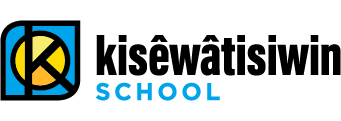INTERACTIONS
PROGRAM DESCRIPTION
Interactions programming supports students with autism spectrum disorder (ASD). ASD impacts how people understand what they see, hear and sense. This lifelong disability can result in difficulties in communication, social relationships, behaviour or learning. Although some students with ASD achieve at grade level, many have uneven or delayed achievement.
GOALS
- Improve communication, social interaction and behaviour while developing academic skills
BENEFITS
- Demonstrate growth in communication skills
- Demonstrate growth in building and maintaining relationships, and understanding social situations
- Demonstrate growth in managing frustration and problem-solving
- Improved ability to handle change or challenging emotions (e.g., anxiety)
- Development of life skills to support independent living and employment
PROGRAM DELIVERY
- Structured environment with regular routines
- Smaller classes for more targeted instruction
- Visual aids, concrete examples and hands-on activities
- Frequent praise and other meaningful rewards to help students adopt positive behaviours and attitudes
- Opportunities to join other classes for instruction in a student’s areas of strength
ELIGIBILITY
To be eligible for programming, students must be:
- 5 ½ to 19 years old on September 1
- Clinically diagnosed with ASD
- Demonstrating stereotyped behaviours, and have severe impairment in social interactions and communication
STRATEGIES
PROGRAM DESCRIPTION
Strategies programming supports students with learning disabilities whose intelligence is measured as average to above average and who have significant academic delays. Learning disabilities are complex and can vary from person to person, requiring flexible instruction that meets each student’s unique needs.
GOALS
- Improve academic skills
- Develop strategies to manage learning challenges with the goal of returning to regular programming as soon as possible
BENEFITS
- Improved reading, writing, listening and comprehension skills
- Application of strategies for studying, remembering and organizing information
- Increased responsibility for learning—planning ahead, setting goals and monitoring progress
PROGRAM DELIVERY
- Visual aids, concrete examples and hands-on activities
- Smaller classes for more targeted instruction
- Opportunities to access other classes for instruction in a student’s area of strength
ELIGIBILITY
To be eligible for programming, students must be:
- in Grades 2 to 12
- diagnosed with a learning disability
- demonstrating significant academic delays despite adequate intellectual, linguistic, sensory and emotional development
